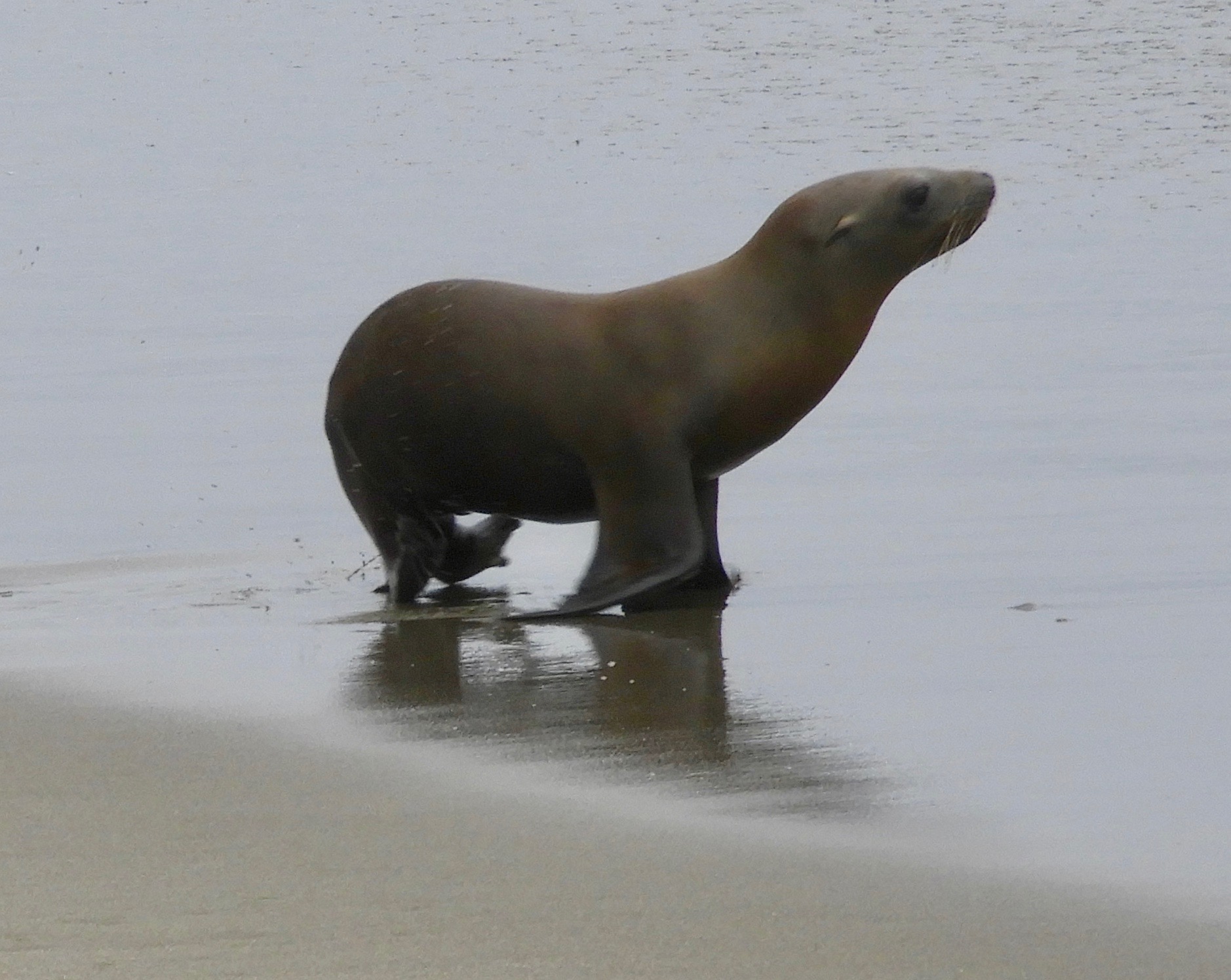5 Tips for Responsible Beach Walks
This underweight yearling California Sea Lion came ashore on a busy beach and was later picked
up by the Marine Mammal Center. (Photo by Mary Feliz)
This blog post originally appeared July 19, 2019 on the Mysterista Blog.
Beach walks rock. My daily attitude adjustment hour takes place on a beach that’s part of the Monterey Bay National Marine Sanctuary. I typically walk by myself, sorting through wrinkles in my real life as well as those of my character Maggie McDonald and her cohorts in the fictional realm.
Though peaceful and world-class gorgeous, my beach can still be a rough neighborhood requiring caution. For example, the Marine Mammal Protection act prevents me from getting too chummy with those who live close by. I need to stay at least fifty feet away from them for my safety and theirs.
With the whales, that’s easy. They keep their distance. Sea otters and their pups mostly do too. But our busiest tourist season coincides with weaning season for sea lions and seals. Yearling pups who’ve travelled far from their birthing grounds are at their most vulnerable. Exhausted and unfamiliar with their new surroundings, they’re apt to haul out for a nap on the same beaches frequented by dogs and people. And that proximity puts them in danger, even from well-meaning nature lovers who want to help.
There are few things as cute and cuddly looking as a mama sea otter and her pup. But trying to snap a selfie with one is dangerous for you and for them. Stay at least 50 yards away while you use a zoom lens to get up close. (Photo by Mary Feliz)
Pinniped biology dictates that yearlings are already living on the edge. Starvation is what drives them to learn to fish. Their moms fatten them up to provide a cushion, but when food supplies are down, toxins infect the water, or the pups are too agitated to rest, human interactions can make the difference between survival and death.
Despite the dangers there are lots of ways for all of us to share the beach and thrive:
Obey signs asking you to stay away from protected areas whether those signs aim to protect birds, shellfish, mammals or humans.
If you’re within selfie range, back off. It’s fine to take pictures with a zoom lens, but a getting a good shot with your phone endangers you and the animals. (It also subjects you to thousands of dollars in fines, court costs, and jail time.)
Draw a circle in the sand at least fifty yards from the animal in every direction and ask other beachgoers to stay outside the circle.
Report the animal to the lifeguard, state park ranger, or, in most of California, the Marine Mammal Center. The main number for MMC (415) 289-7325, connects you to their Marin County rescue hospital, but they’ll get your message to local volunteers. Learn who to call about stranded animals in other locations you visit as a resident or tourist.
Take a photo (at a distance) of the animal with your phone and another of the general area. If you have a camera with a zoom function, take as close a picture you can get from at least 50 yards away. Your photos will help the agency determine what equipment and staff they need to rescue the animal. It will also confirm your identification of the species and location.
The National Park Service offers these additional tips: 10 tips to respect wildlife, stay safe, and avoid internet ridicule.
What are the endangered animals where you live? How apt are you to run into them on your own daily walk? Do you know the numbers to call if you spot a bird or animal in trouble?
Cozy mystery writerMary Feliz is a certified California Naturalist and lives, walks, and enjoys the wildlife on the same beach featured in this blog post and in her latest book, Cliff Hanger, the fifth in her Maggie McDonald Mystery series.

